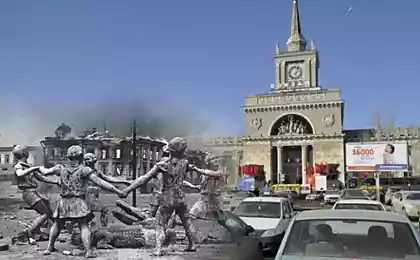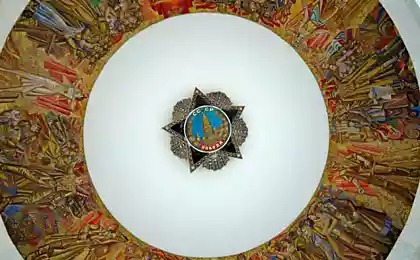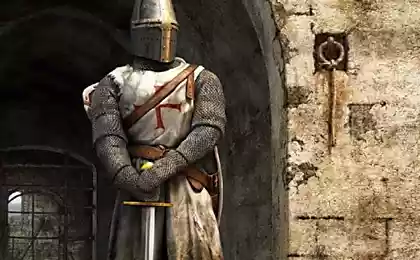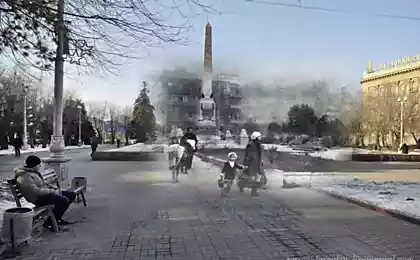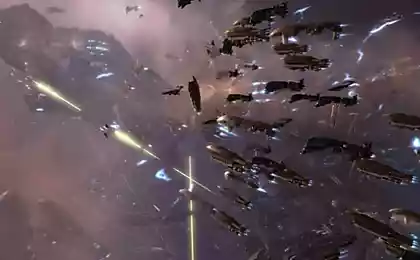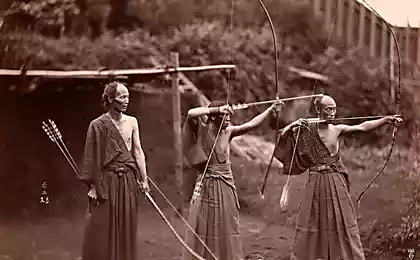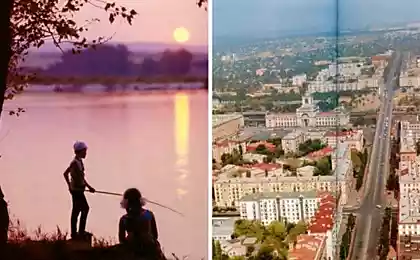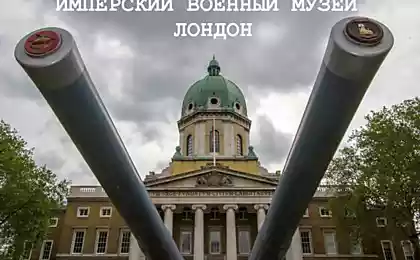1592
The Battle of Stalingrad (45 photos)
On February 2, was the anniversary of the Battle of Stalingrad, one of the worst and bloodiest in the history of the Second World War!
The strategic importance of Stalingrad was determined by two important factors: its defense potential and geographical location. The city worked in the famous 30s Tractor Plant, which gave the country 50% of tractors. In 1940, at its base begins production T-34 tanks. Important defensive value had products factory "Red October", "Barricades", "Shipyard" and others.
Stalingrad was and a major transportation hub with highways in Central Asia and the Urals. The Volga was conducted transportation of Baku oil in the central regions of the country.

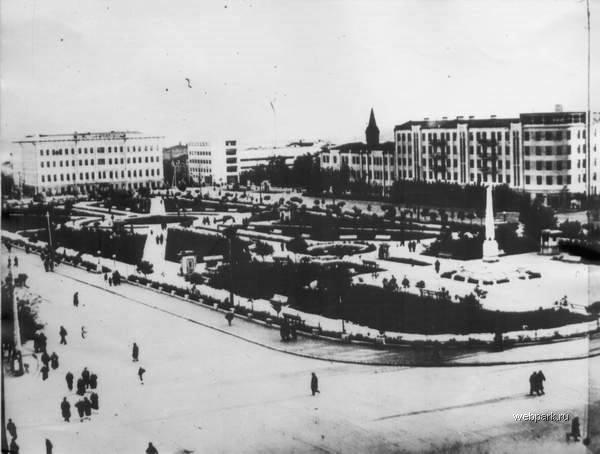
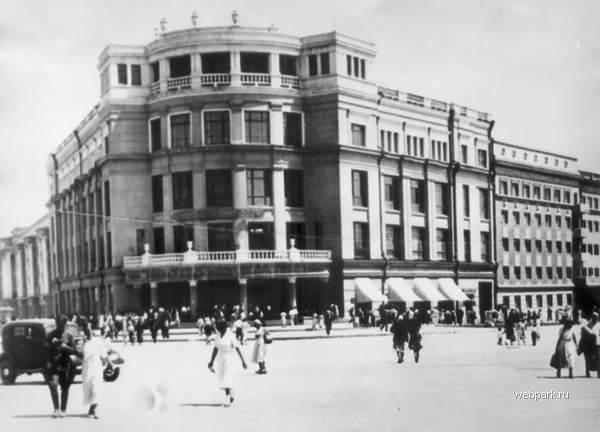
July 17, 1942 avant-garde of the German 6th Army clashed with units of the 62nd and 64th armies. Historical battle began.
Strategic initiative belonged to the Wehrmacht. At his side had the advantage in aircraft and tanks, vehicles and the total number of troops. The Soviets suffered heavy losses.
Command of the Wehrmacht's initial plan was reduced to ensure that the covering blows encircle the Soviet troops in the big bend of the Don, go to the district Kalach and then break through to Stalingrad. However, as a result of persistent defense, counterattacks our 1st and 4th Panzer armies of the enemy plan was foiled. Wehrmacht had to go on the defensive, which lasted until the arrival of new forces - the 17th and 11th army corps. Strike force Wehrmacht significantly increased by incorporating in its structure the 4th Panzer Army, originally aimed at the Caucasus.
In the period from 5 to 10 August the enemy is making important strides. He breaks through the Soviet defenses and goes to the next outskirts of Stalingrad.
However, the master plan of the enemy on the run Stalingrad crashed.

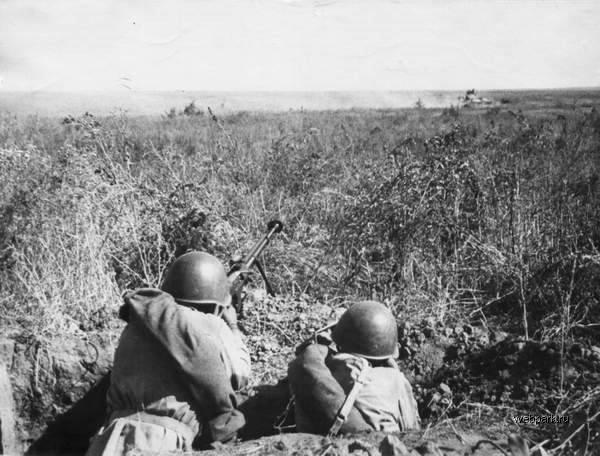
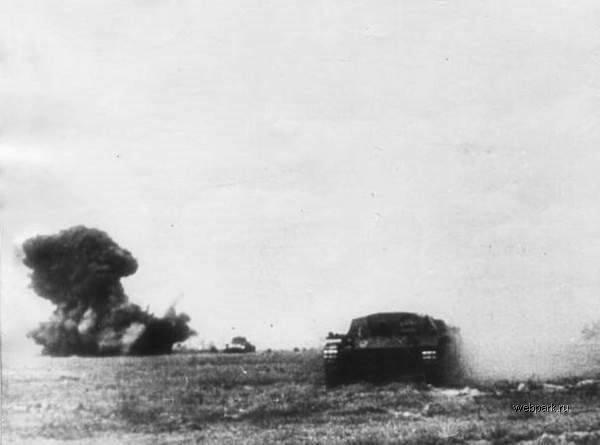
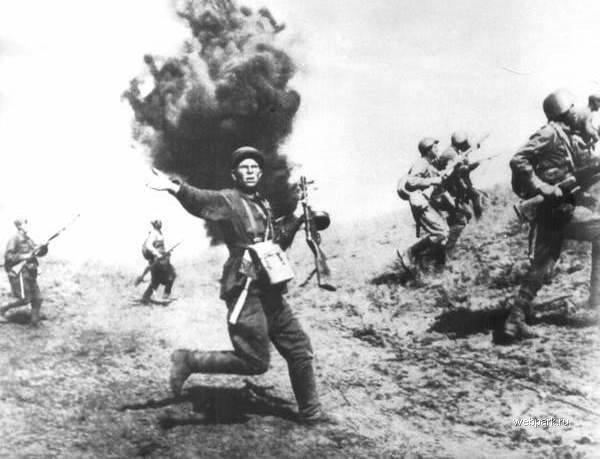
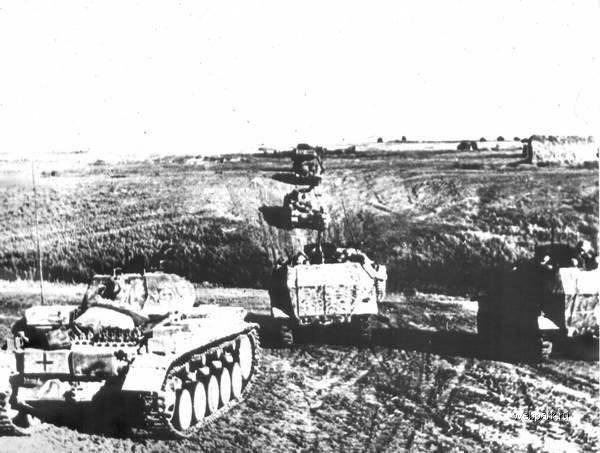
By mid-August 1942 the Stalingrad and South-Eastern Front opposed 6th Infantry and 4th Panzer Army Wehrmacht and 8th Italian army, only about 39 divisions.
During this period, the Germans continued their offensive. They managed to capture an important bridgehead on the left bank of the Don, and by the end of August 22, 1942 it significantly expanded. The next day, the 14th German Panzer Corps launched an offensive on the village market. Strike force Wehrmacht crossed all the area between the hours of 16 and 23 August reached the Volga near the villages Latoshinka, Akatovka, market north of Stalingrad. German tanks appeared in the area of the tractor plant and began firing at him. The situation has become critical for the defenders, but no one thought of surrender of the city.
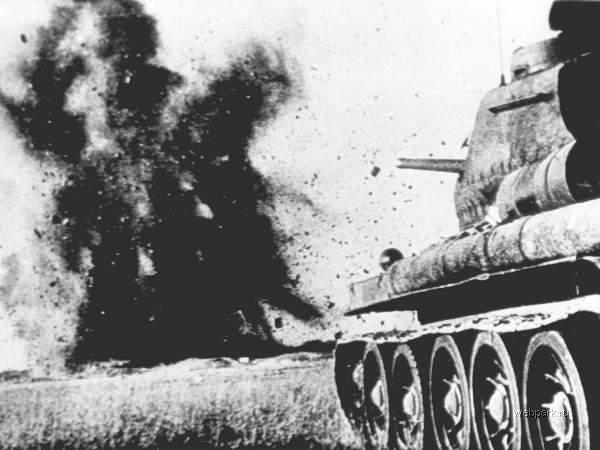

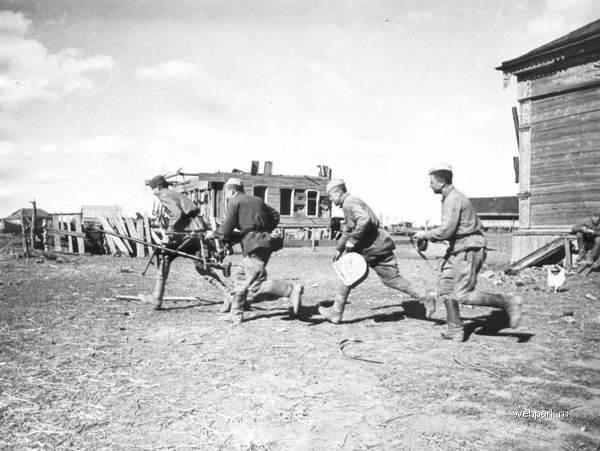
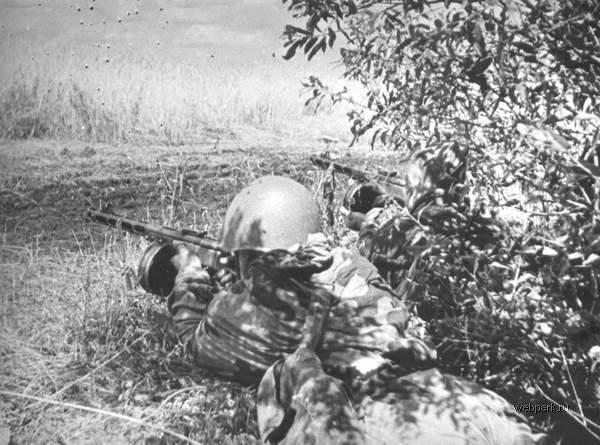
August 23, 1942 German aircraft under the command of Richthofen was subjected to barbaric bombardment of Stalingrad. In one day, the enemy made more than 2,000 sorties. Despite the opposition of the Soviet aircraft and antiaircraft artillery, managed to knock down 120 Nazi planes, the city was in ruins, killed more than 40,000 civilians. Not only burning buildings, burned land and the Volga, as were destroyed tanks with oil. On the streets of the fire was so hot that flammable clothing in public, run for cover.
The same day, the 14th Tank Corps of the German 6th Army broke through to the Volga River near the village market and cut 62 Army forces from the rest of the Stalingrad Front.
August 23, 1942 - the most sorrowful date in the history of Stalingrad.

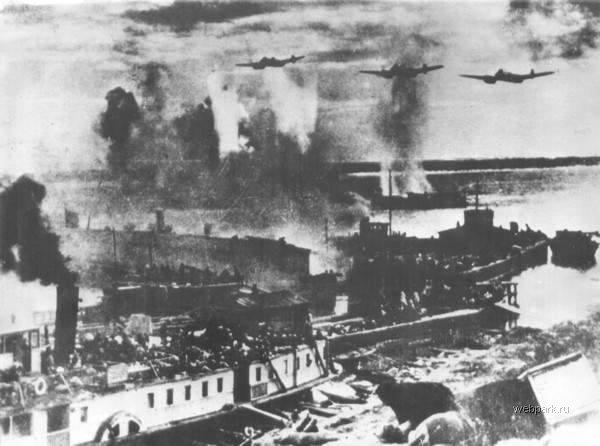

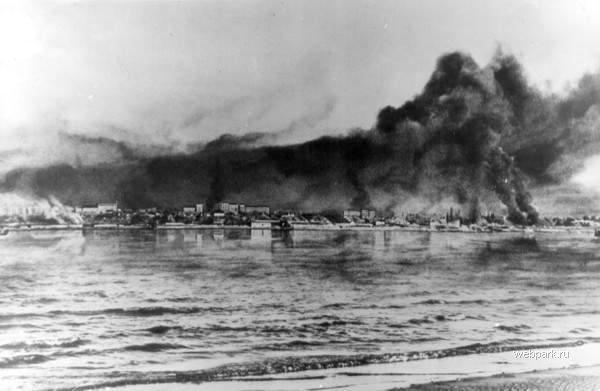

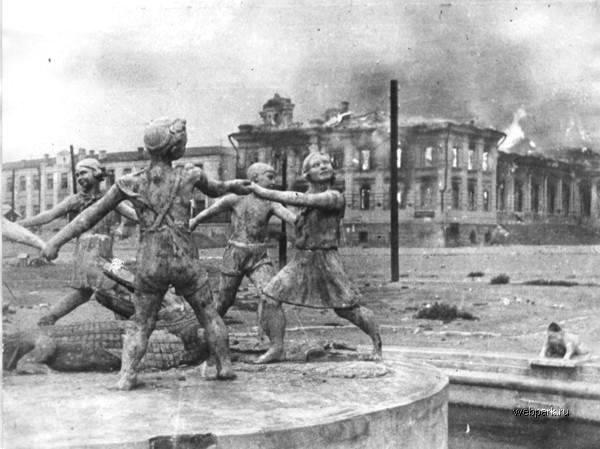
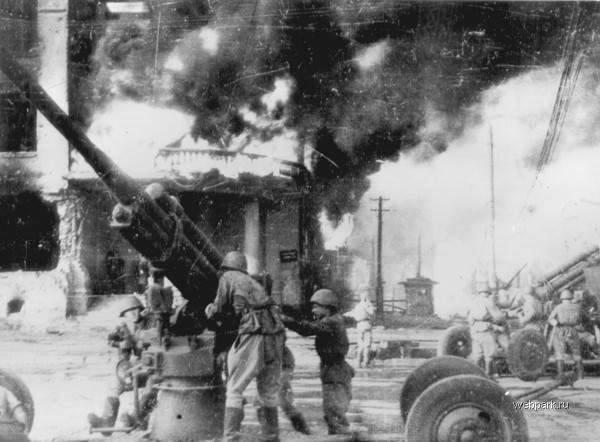

Direct the defense of Stalingrad performed two armies - 62nd and 64th. They took the brunt. But the ultimate success of the defensive battle not only determined resistance of these armies, but also active actions of the remaining forces of the Stalingrad areas that attract a significant part of the enemy forces.
September 13, 1942, German troops stormed the city. After two weeks of grueling fights they captured the city center, but the main task - to capture all the Volga at Stalingrad - not complied with.
The fighting did not stop even at night. Soviet troops not only defended themselves bravely, but also to constantly increase the power of their counterattacks. As a result, by mid-November, the enemy loses the initiative and finally goes on the defensive.
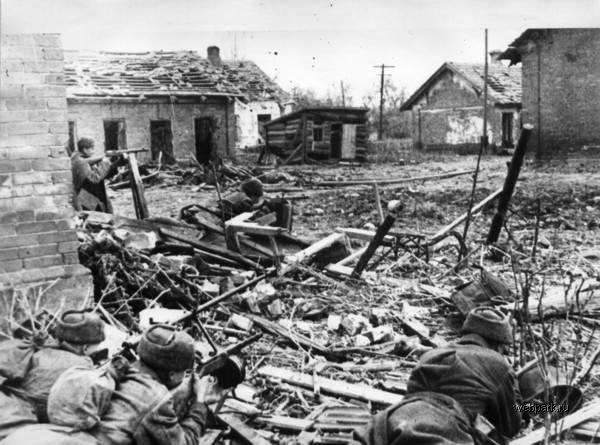

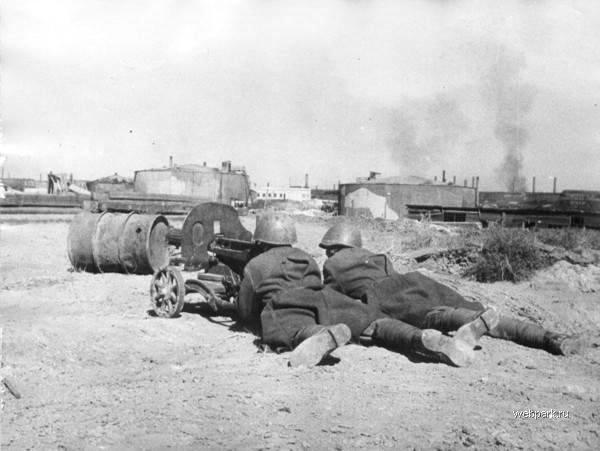
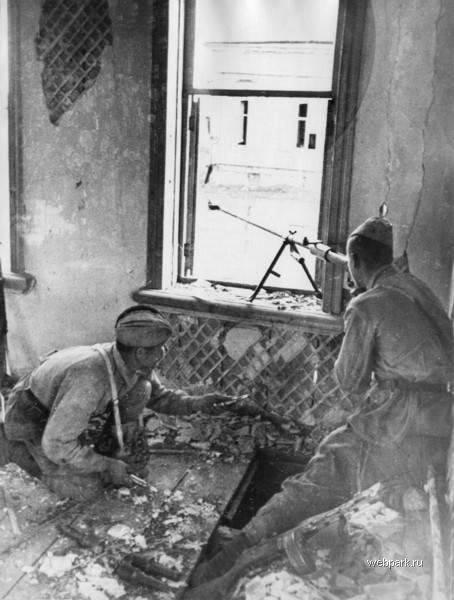
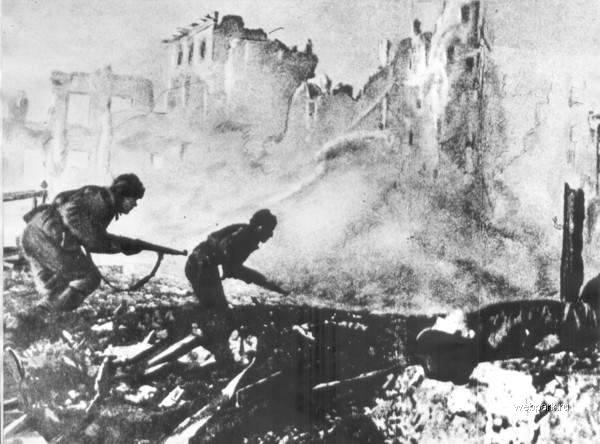
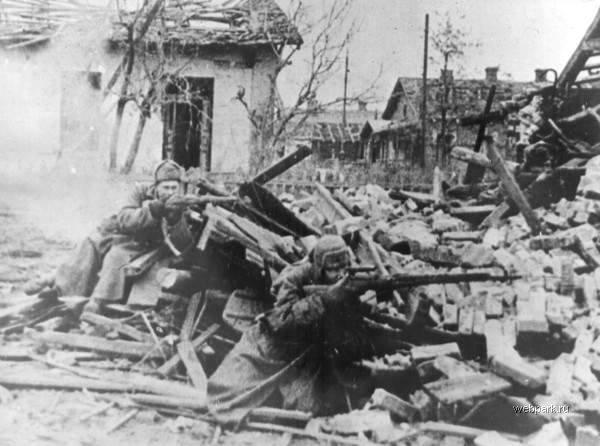
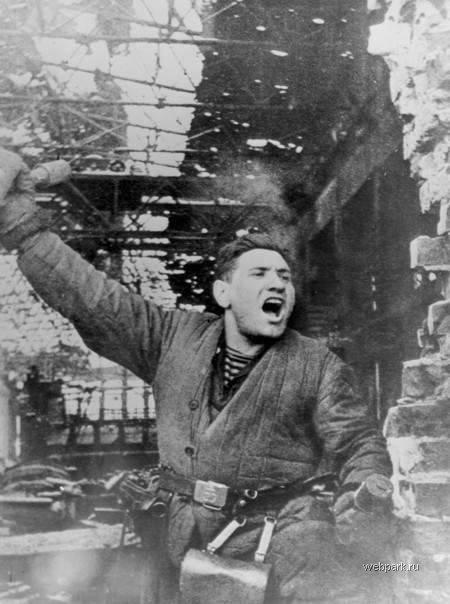
November 19 began a counteroffensive of Soviet troops at Stalingrad. November 23 connections Southwestern and Don fronts met near Kalach, Soviet, Marinovka. Enemy group numbering 330,000 people with numerous techniques was encircled.
Command of the Wehrmacht decided to hold Stalingrad and release surrounded by troops and armored group under the command of General Hoth December 12, 1942 goes on the offensive. By 19 December, the offensive has already involved more than 300 German tanks. But thanks to the courage and fortitude of the Soviet troops managed to stop the attack, and then, with the arrival of reinforcements, drop from Stalingrad to 200 kilometers.
In early January, began an operation to eliminate the encircled. By the end of January, the Wehrmacht, despite the desperate resistance, were subdivided into two parts - north and south. January 31, 1943 was captured by the commander of the 6th Army, Field Marshal Paulus and his staff surrendered and the southern part of the encircled. February 1, 1943 after the devastating impact of our artillery and surrendered to the northern part. February 2, 1943 at 16 o'clock ended the Battle of Stalingrad.
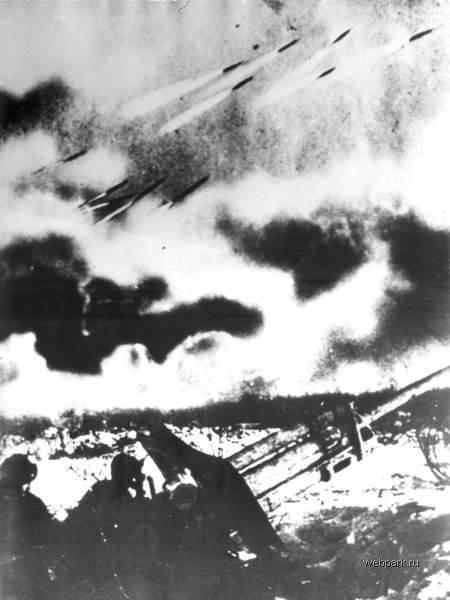


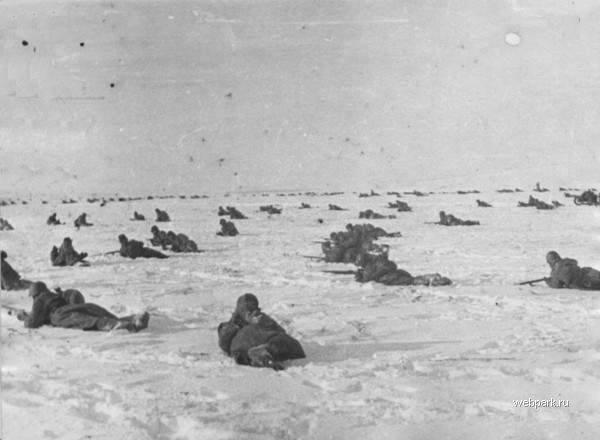


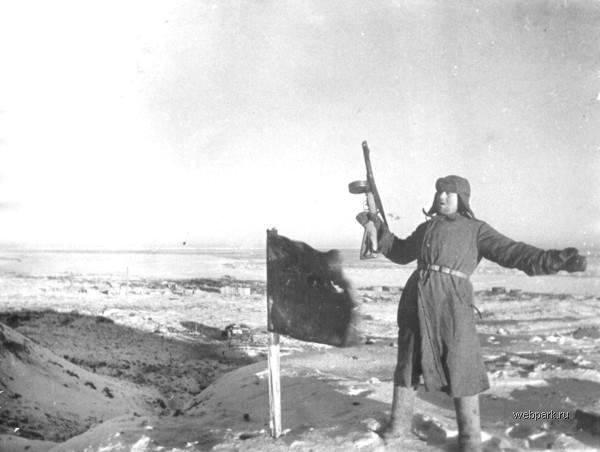
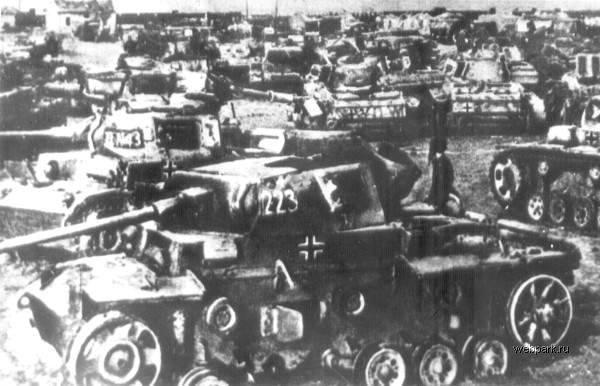
Issued and rare periods of calm between fights. Much needed to keep up with the time: smoke, dry, tidy shape, dine, write a letter home, just to talk to friends.
Generalized combat experience. It is in these moments were born important tactical invention 62nd Army - assault group, small in number, mobile, well-armed, the ability to effectively lead the melee.
Despite his fierce battle is not paralyzed spiritual life fighters Stalingrad. "The interest in post-war collective farms, to the future of relations between great nations and governments in Stalingrad was almost universal. "... Almost everyone believed that good will win the war, and honest people, not regretting their blood will be able to build a good, fair life." (V. Grossman Life and Fate. M., 1989. 171 pp.).

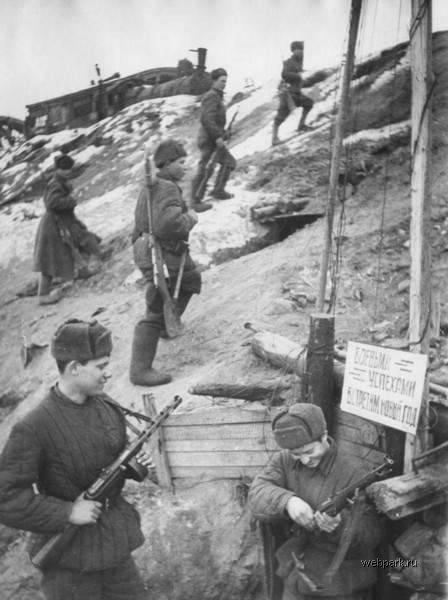

Military operations have destroyed almost the entire housing stock of the city - about 42 thousand buildings. Many foreign government officials and journalists who visited Stalingrad, sincerely believed that it can not be restored.
The city was almost empty. In the six urban areas in which pre-war population of about half a million people, on February 2, 1943, there were fifteen hundred inhabitants. Life in the city barely warm. People lived in basements, bunkers, dugouts, in the ruins of houses.
The territory of the city was crammed with mines, shells, unexploded bombs.
For 2, 5 years after the Battle of sappers neutralized over 300 thousand minutes, more than a million shells and over 100 thousand bombs. These consequences of the war and now remind myself.
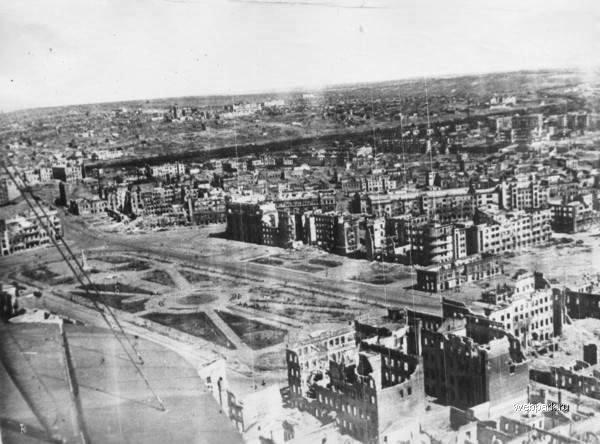
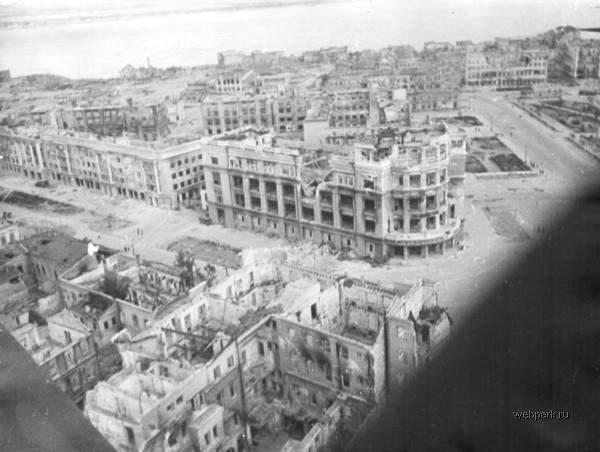
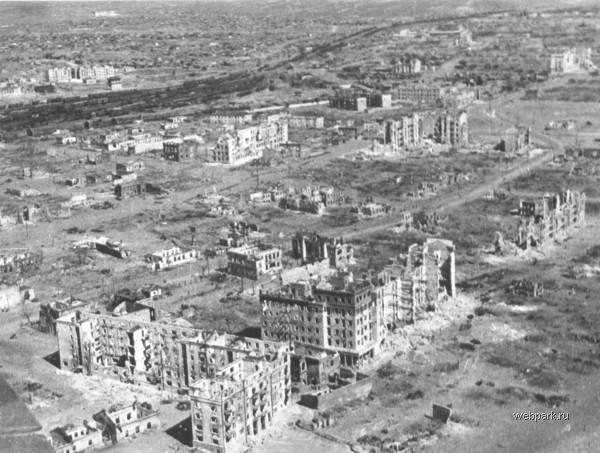
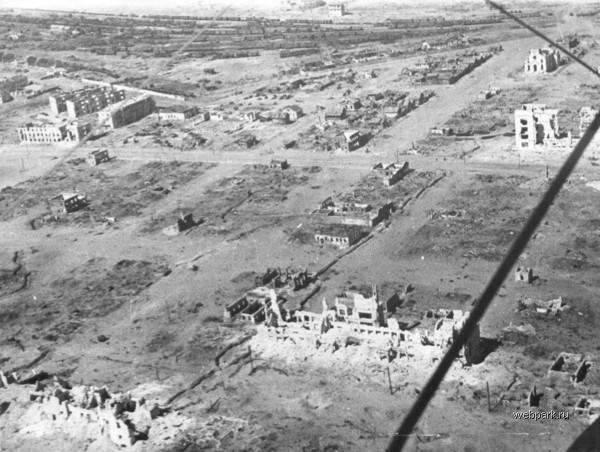
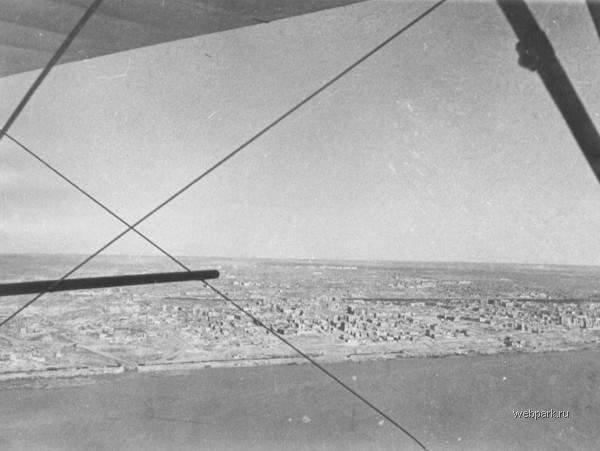
After the completion of the battle of Stalingrad was the population to grow rapidly due to citizens returning to their native ashes, and teams of volunteer builders. In March 1943, in Stalingrad lived 55 thousand people, in June - about 150 thousand, and in September - 210 thousand people.
Citizens had to face great difficulties. Lacked not only tolerable housing, but also food, clothing, footwear, fuel. Completely destroyed city utilities. For the water had to go to the Volga. The destruction of the whole network is subjected to medical institutions - hospitals, dispensaries and clinics. Move around the city could only walk as the tram tracks and highways were blown up.
But people do not despair, as found most importantly - the right to life.
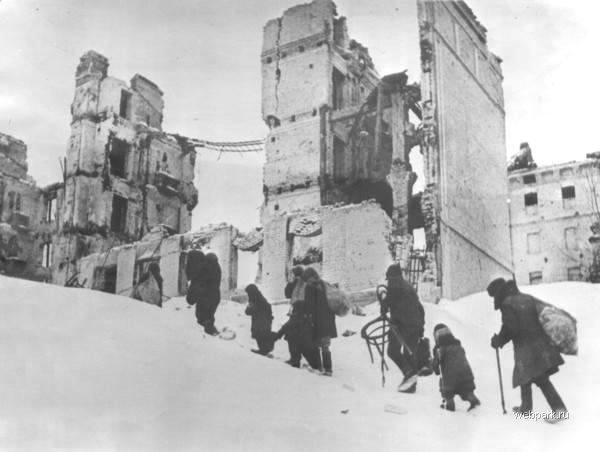
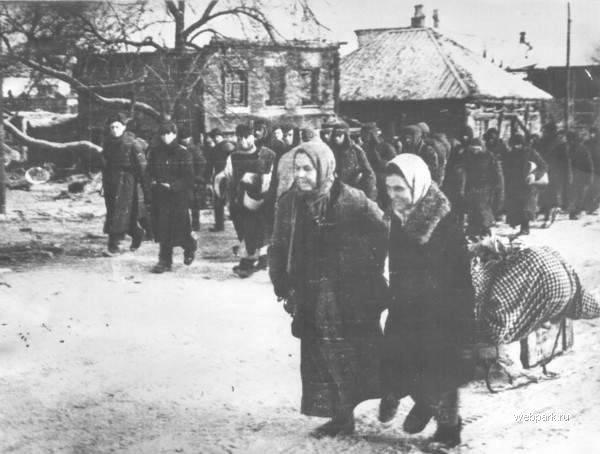
Source
The strategic importance of Stalingrad was determined by two important factors: its defense potential and geographical location. The city worked in the famous 30s Tractor Plant, which gave the country 50% of tractors. In 1940, at its base begins production T-34 tanks. Important defensive value had products factory "Red October", "Barricades", "Shipyard" and others.
Stalingrad was and a major transportation hub with highways in Central Asia and the Urals. The Volga was conducted transportation of Baku oil in the central regions of the country.



July 17, 1942 avant-garde of the German 6th Army clashed with units of the 62nd and 64th armies. Historical battle began.
Strategic initiative belonged to the Wehrmacht. At his side had the advantage in aircraft and tanks, vehicles and the total number of troops. The Soviets suffered heavy losses.
Command of the Wehrmacht's initial plan was reduced to ensure that the covering blows encircle the Soviet troops in the big bend of the Don, go to the district Kalach and then break through to Stalingrad. However, as a result of persistent defense, counterattacks our 1st and 4th Panzer armies of the enemy plan was foiled. Wehrmacht had to go on the defensive, which lasted until the arrival of new forces - the 17th and 11th army corps. Strike force Wehrmacht significantly increased by incorporating in its structure the 4th Panzer Army, originally aimed at the Caucasus.
In the period from 5 to 10 August the enemy is making important strides. He breaks through the Soviet defenses and goes to the next outskirts of Stalingrad.
However, the master plan of the enemy on the run Stalingrad crashed.





By mid-August 1942 the Stalingrad and South-Eastern Front opposed 6th Infantry and 4th Panzer Army Wehrmacht and 8th Italian army, only about 39 divisions.
During this period, the Germans continued their offensive. They managed to capture an important bridgehead on the left bank of the Don, and by the end of August 22, 1942 it significantly expanded. The next day, the 14th German Panzer Corps launched an offensive on the village market. Strike force Wehrmacht crossed all the area between the hours of 16 and 23 August reached the Volga near the villages Latoshinka, Akatovka, market north of Stalingrad. German tanks appeared in the area of the tractor plant and began firing at him. The situation has become critical for the defenders, but no one thought of surrender of the city.




August 23, 1942 German aircraft under the command of Richthofen was subjected to barbaric bombardment of Stalingrad. In one day, the enemy made more than 2,000 sorties. Despite the opposition of the Soviet aircraft and antiaircraft artillery, managed to knock down 120 Nazi planes, the city was in ruins, killed more than 40,000 civilians. Not only burning buildings, burned land and the Volga, as were destroyed tanks with oil. On the streets of the fire was so hot that flammable clothing in public, run for cover.
The same day, the 14th Tank Corps of the German 6th Army broke through to the Volga River near the village market and cut 62 Army forces from the rest of the Stalingrad Front.
August 23, 1942 - the most sorrowful date in the history of Stalingrad.








Direct the defense of Stalingrad performed two armies - 62nd and 64th. They took the brunt. But the ultimate success of the defensive battle not only determined resistance of these armies, but also active actions of the remaining forces of the Stalingrad areas that attract a significant part of the enemy forces.
September 13, 1942, German troops stormed the city. After two weeks of grueling fights they captured the city center, but the main task - to capture all the Volga at Stalingrad - not complied with.
The fighting did not stop even at night. Soviet troops not only defended themselves bravely, but also to constantly increase the power of their counterattacks. As a result, by mid-November, the enemy loses the initiative and finally goes on the defensive.







November 19 began a counteroffensive of Soviet troops at Stalingrad. November 23 connections Southwestern and Don fronts met near Kalach, Soviet, Marinovka. Enemy group numbering 330,000 people with numerous techniques was encircled.
Command of the Wehrmacht decided to hold Stalingrad and release surrounded by troops and armored group under the command of General Hoth December 12, 1942 goes on the offensive. By 19 December, the offensive has already involved more than 300 German tanks. But thanks to the courage and fortitude of the Soviet troops managed to stop the attack, and then, with the arrival of reinforcements, drop from Stalingrad to 200 kilometers.
In early January, began an operation to eliminate the encircled. By the end of January, the Wehrmacht, despite the desperate resistance, were subdivided into two parts - north and south. January 31, 1943 was captured by the commander of the 6th Army, Field Marshal Paulus and his staff surrendered and the southern part of the encircled. February 1, 1943 after the devastating impact of our artillery and surrendered to the northern part. February 2, 1943 at 16 o'clock ended the Battle of Stalingrad.








Issued and rare periods of calm between fights. Much needed to keep up with the time: smoke, dry, tidy shape, dine, write a letter home, just to talk to friends.
Generalized combat experience. It is in these moments were born important tactical invention 62nd Army - assault group, small in number, mobile, well-armed, the ability to effectively lead the melee.
Despite his fierce battle is not paralyzed spiritual life fighters Stalingrad. "The interest in post-war collective farms, to the future of relations between great nations and governments in Stalingrad was almost universal. "... Almost everyone believed that good will win the war, and honest people, not regretting their blood will be able to build a good, fair life." (V. Grossman Life and Fate. M., 1989. 171 pp.).



Military operations have destroyed almost the entire housing stock of the city - about 42 thousand buildings. Many foreign government officials and journalists who visited Stalingrad, sincerely believed that it can not be restored.
The city was almost empty. In the six urban areas in which pre-war population of about half a million people, on February 2, 1943, there were fifteen hundred inhabitants. Life in the city barely warm. People lived in basements, bunkers, dugouts, in the ruins of houses.
The territory of the city was crammed with mines, shells, unexploded bombs.
For 2, 5 years after the Battle of sappers neutralized over 300 thousand minutes, more than a million shells and over 100 thousand bombs. These consequences of the war and now remind myself.





After the completion of the battle of Stalingrad was the population to grow rapidly due to citizens returning to their native ashes, and teams of volunteer builders. In March 1943, in Stalingrad lived 55 thousand people, in June - about 150 thousand, and in September - 210 thousand people.
Citizens had to face great difficulties. Lacked not only tolerable housing, but also food, clothing, footwear, fuel. Completely destroyed city utilities. For the water had to go to the Volga. The destruction of the whole network is subjected to medical institutions - hospitals, dispensaries and clinics. Move around the city could only walk as the tram tracks and highways were blown up.
But people do not despair, as found most importantly - the right to life.


Source
